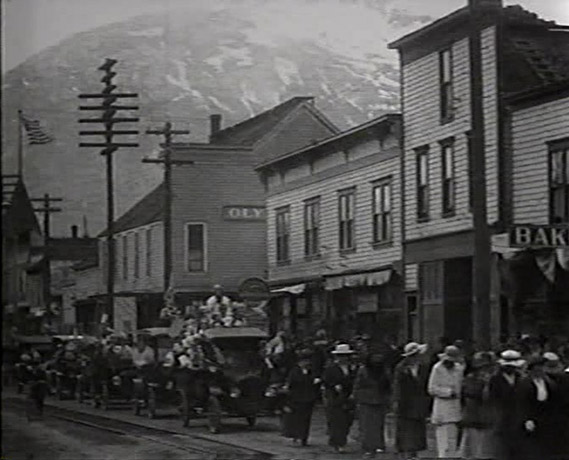A Day in Skaguay
June 12 - September 06, 2010
A Day in Skaguay was filmed by Burton Holmes (1870–1958), an American traveler, photographer, and filmmaker, who in 1904 coined the term travelogue to advertise travel lectures with projections of hand-painted glass-lantern slides and early films. From China to the Panama Canal to the 1906 eruption of Mount Vesuvius, Holmes was there.
The silent footage here evokes a bygone era portrayed in the photographs of Frye-Bruhn and Alaska. Included is a Fourth of July parade and children’s race, an impressively large dahlia, a trip to Haines, tantalizing strawberries and raspberries, and a dog-powered taxi service. The Daily Alaskan advertised the travelogue’s premiere on September 5, 1918, under the headline "Skagway Will See Itself on Screen at [the] P.P.P." The P.P.P., or the Popular Picture Palace, was one of two movie theaters operating in Skagway at the time.
The film lists the town’s name as Skaguay, which derives from the indigenous Tlingit names for the area: Skagua or Shgagwei, meaning a windy place with white caps on the water. After the arrival of Klondike stampeders, Skaguay boomed, reaching a peak population of 10,000 by the spring of 1898, the same year that, for unknown reasons, the United States government changed the spelling of the town’s name to Skagway.
This exhibition is funded by the Frye Foundation with the generous support of Frye Art Museum members and donors.
The Frye is grateful to Karl Gurcke, Historian, National Park Service, for bringing A Day in Skaguay to our attention and for sharing his research with us.
Images: Stills from A Day in Skaguay, 1918

